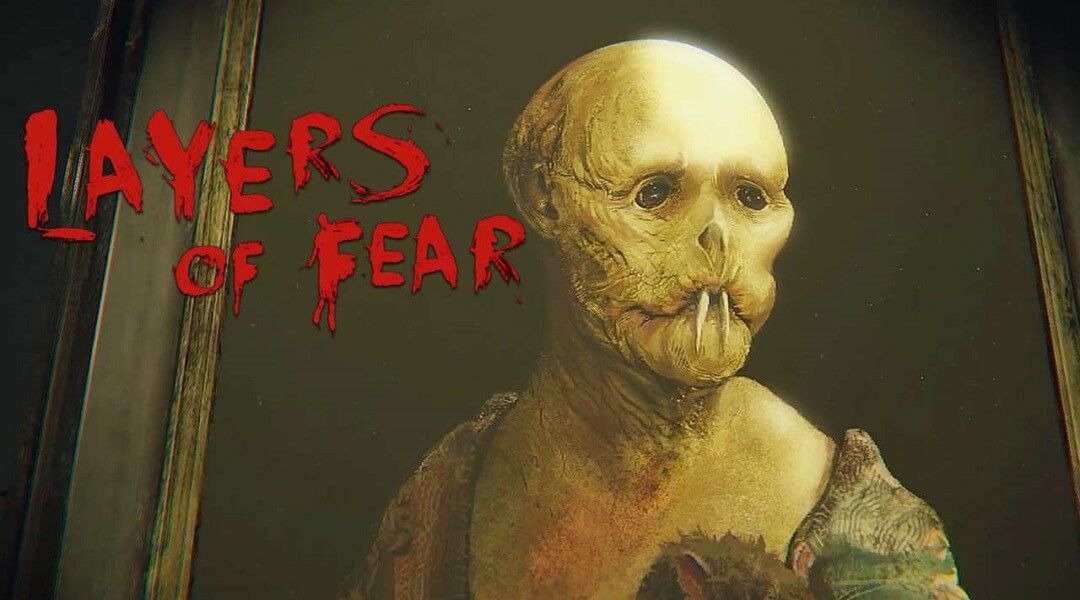Layers of Fear delivers on its promise of a unique vision of gothic horror, but the game leans heavily on creepy dolls and other cliche genre gimmicks to jump scare players as they explore its shifting corridors.
Video game fans have been clamoring for a new feature-length spin on the horror genre since Kojima's P.T. proved there are still new ways to creep out players. Layers of Fear offers a similar experience by taking the walking simulator genre into the mid-20th century for a tour through the home of an insane painter. The results are a bit of a mixed bag, though, but come with guaranteed jump scares.
Layers of Fear puts players in first-person control of an artist who is attempting to finish his masterpiece. At first glance, the protagonist seems to be alone in his gothic home and players are tasked with one goal: Finish it. The all-important "it" is a painting that the player stumbles upon within the first few minutes of the game. The canvas is blank as the game begins and the quest for inspiration, materials, and vision begins.
As the protagonist wanders through his home, it quickly becomes clear that his perception of reality cannot be trusted. The layout of the house is constantly changing and what was once a door may soon be a wall, a window, or a terrifying ghost. As players explore the house, which is full of creepy paintings, walls splattered with ink, and hundreds of creepy dolls; the tone of the game grows darker and darker. Notes and trinkets scattered around the house start to fill in the artist's backstory and reveal that the protagonist may actually deserve the haunting and torture that the house holds.
There is no combat in the game and aside from walking, the only mechanic is pushing and pulling items in the rooms and cracking the occasional lock. Doors can be opened, drawers can be manipulated, and certain highlighted items can be picked up and potentially taken back to the canvas room (which always magically appears when it is time to add to the masterpiece). With no combat or platforming, the main driving force through the game is the unraveling narrative and the puzzles that must be solved to proceed through certain rooms.
The game's puzzles vary in difficulty and in entertainment level. Some puzzles are complex and involve examining the surroundings carefully, but the majority of the puzzles are solved simply by finding the interactive item in the room. Due to the shifting around of doors and rooms, the game is pretty much on rails. This is good in that it's basically impossible to get lost, but bad in that the formula becomes predictable very quickly.
Layers of Fear relies heavily on jump scares and it certainly has the gimmick mastered. The end of many creepy hallways or rooms typically contain some kind of shock and players can come to expect doors slamming shut, creepy dolls appearing, or lights cutting out after the first hour or so of gameplay. Even with the expectation, the scares didn't stop making our adrenaline pump after the first hour, but they did start to feel a little cheap and familiar. The game makes fantastic use of toying with expectations, reality, and art motifs; but recycling the same themes for a jump scare in hallway after hallway for hours on end definitely loses its impact.
Despite the lack of combat, the protagonist can die if he runs into one of the house's particularly violent ghosts. A death sends the player back a few steps to a recent room and it doesn't take long to get back on track. It's a little confusing at first that some ghosts should be avoided, while other supernatural elements have to be confronted to proceed, but it only takes a few deaths to get the hang of which ghosts to avoid.
To that point, it's also never clear which path is the right one or, rather, which path advances the game. A player may venture through one door without having fully explored an area, but the instantly closing door shuts them off from backtracking. As a result, there's a genuine sense that the player is missing important elements of the story and the design simply because they didn't explore in the right order. If they find the correct path first then the secondary options will go unnoticed. In some games that scenario might be less of an issue, but here it means the player is not getting the full story. Thankfully, the game is short enough (about 3-4 hours for most players) that a second playthrough will be easy to swallow.
As a strict game, Layers of Fear's controls are basic enough, but are still a bit clumsy. The walking works well enough, but certain objects, especially doors, cabinets, and drawers, can be hard to open on the first try. It's nothing that gets in the way, but the opening and closing mechanic still could have been refined.
Despite the clunky controls, typical horror tropes, and mediocre puzzles, Layers of Fear does provide a frightening experience and a compelling narrative. The game's real strength is its tone and dedication to the artwork theme. The struggles of the artist feel incredibly real and the story will make players simultaneously disgusted by and sympathetic towards the man that they are controlling. The music and narrative will pull players down each corridor towards an inevitable scare for just a handful of hours, but the short experience is definitely worth the $19.99 price tag for fans of horror.
Trailer
[HTML1]
Layers of Fear releases on February 16th for PC, PlayStation 4, and Xbox One. Game Rant was provided a PS4 copy for this review.

